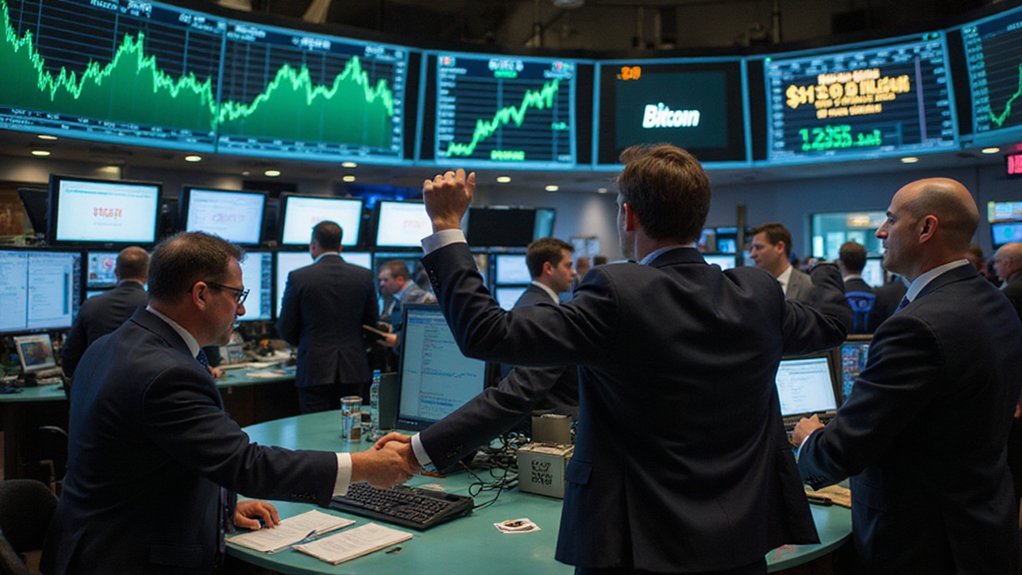While conventional wisdom might suggest that warming international relations would buoy cryptocurrency markets, Bitcoin defied expectations by tumbling nearly $4,000 shortly after the announcement of a significant tariff reduction between the United States and China.
The cryptocurrency, which had surged past $105,700, retreated to approximately $102,000 as investors processed the implications of the diplomatic breakthrough—a curious reaction to news that typically enhances market confidence.
The explanation lies in a fundamental shift in investor sentiment.
Investor psychology pivots dramatically at precisely the moment conventional wisdom predicts otherwise.
The tariff agreement—which slashed U.S. duties from 145% to 30% and Chinese tariffs from 125% to 10%—triggered a classic rotation from safe-haven assets to equities.
Markets, in their infinite wisdom (or perhaps myopia), perceived the 90-day tariff truce as diminishing the need for hedges against economic uncertainty, prompting capital to flow toward sectors poised to benefit from improved trade relations.
Bitcoin’s persistent 83% correlation with the S&P 500 continues to constrain its ability to chart an independent course, despite proponents’ insistence on its decoupling potential. Technical analysts examining moving averages could identify this shifting relationship between Bitcoin and traditional markets.
The cryptocurrency’s dual identity—alternately championed as digital gold and derided as a speculative plaything—remains unresolved, with its safe-haven characteristics apparently receding whenever risk appetites improve.
Institutional dynamics add another layer of complexity.
Companies like Strategy and BlackRock now control approximately 6% of circulating Bitcoin supply, raising understandable concerns about concentrated ownership and potential selling pressure.
Nevertheless, ETF inflows have remained robust, suggesting that Bitcoin’s meteoric rise to become the sixth-largest tradable asset globally—surpassing both silver and Google in market capitalization—retains substantial institutional backing.
Some analysts, undeterred by the recent volatility, maintain bullish predictions of $150,000 based on technical setups. This optimistic outlook stems from Bitcoin’s recently confirmed bull flag pattern breakout on weekly charts, accompanied by increased trading volume.
Yet as Bitcoin navigates this macroeconomic crossroads, investors might do well to recall that cryptocurrencies, for all their revolutionary promise, remain exquisitely sensitive to the same forces that have governed markets since time immemorial: fear, greed, and unexpected diplomatic press conferences.









